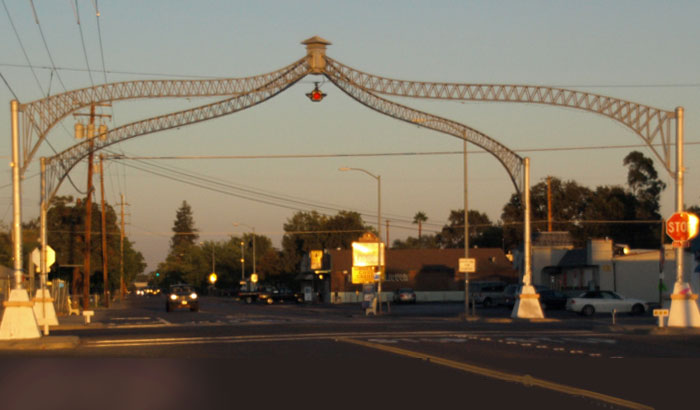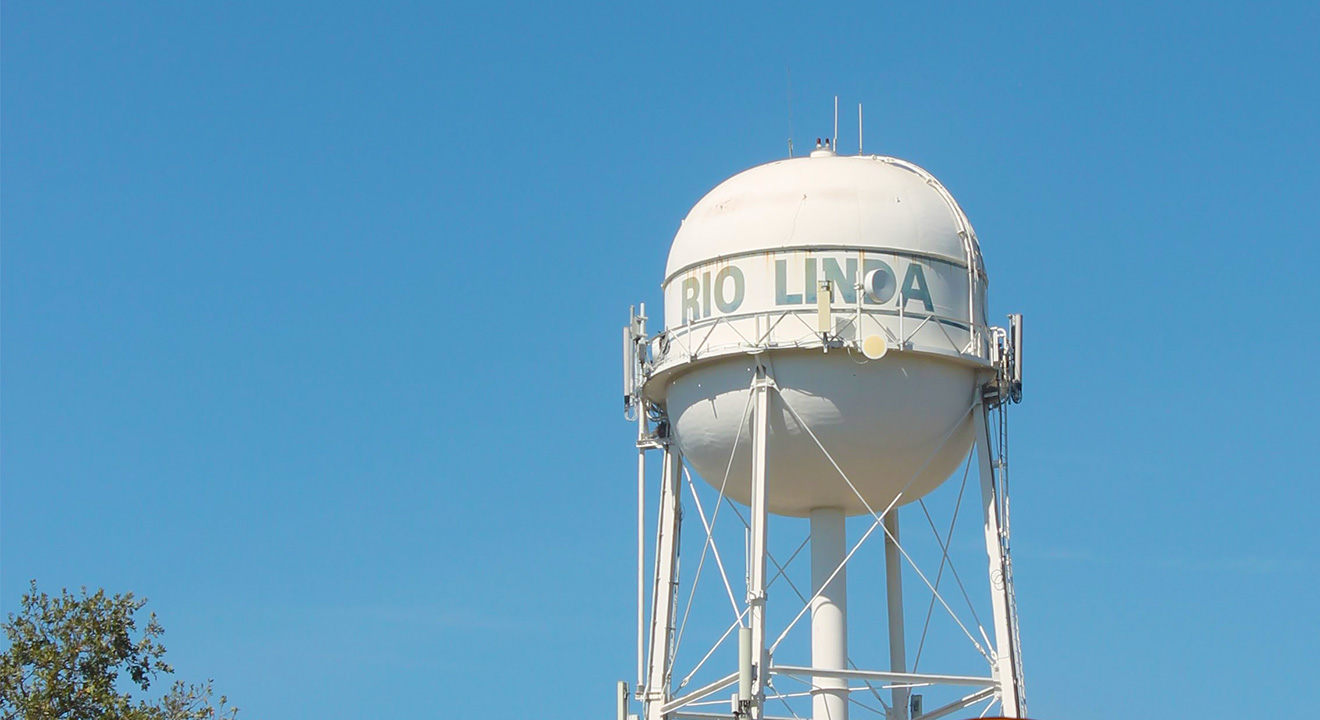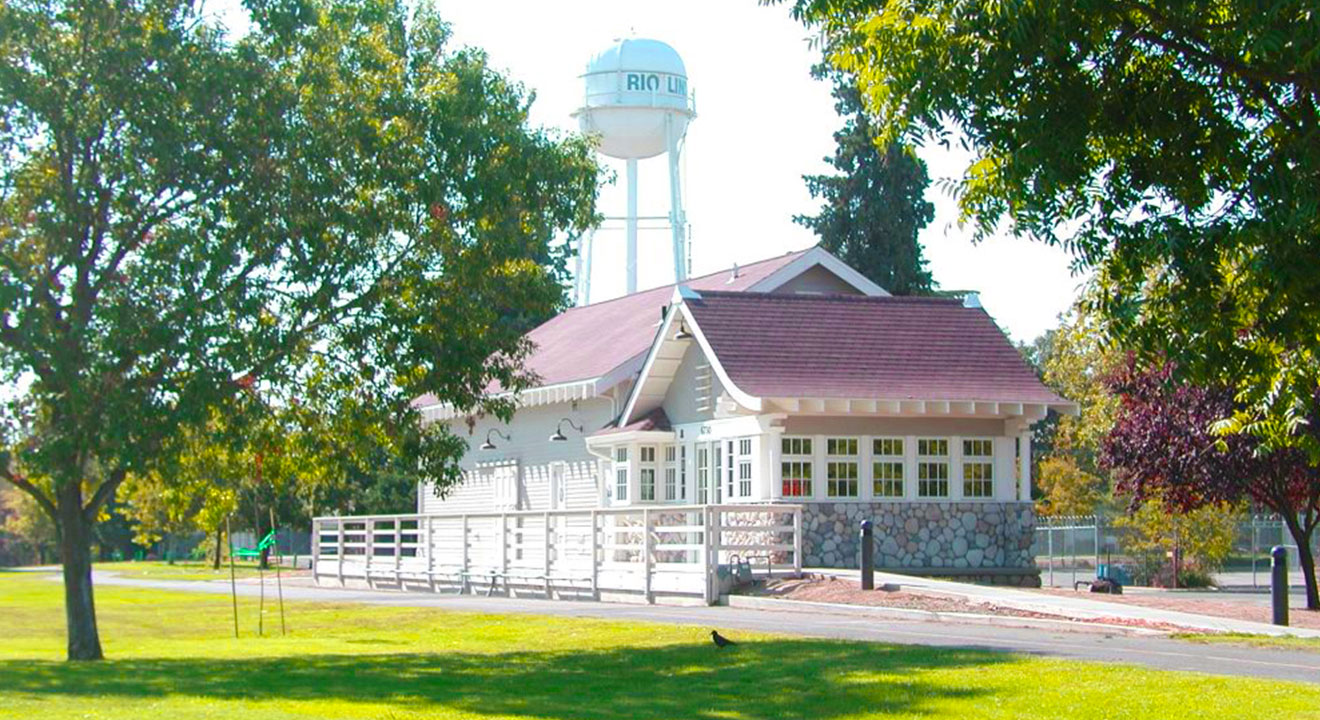(Reprinted from the Sacramento Bee, January 13, 1993)
Written by Dixie Reid, Bee Staff Writer
Rio Linda is the land of yard cars and roaming dogs, where chain-link fences are a status symbol and the local law is something the cops call “Okie justice.” There is a story from a few years back about a man jailed for beating his wife; she supposedly carried on with a neighbor while he was away. One morning soon after his release, the neighbor woke up in extreme pain. He’d been hit over the head with a beer bottle during the night – and castrated.
The town has no bowling alley or shopping mall. So the citizens make their own recreation. Legend has it that at night they’ll strap flashlights on their shotguns and shoot rats. Hundreds of rats. And they’re known for answering the door with those same shotguns aimed at the screen.
Talk-show loudmouth Rush Limbaugh calls Rio Linda “the benighted armpit of Sacramento.” It’s a place that still has bloody family feuds, witchcraft, biker gangs (although many have moved elsewhere) and active methamphetamine labs. The Ku Klux Klan used to burn crosses here.
“It’s a racist, bigoted town. I wouldn’t deny that,” said Bill Mannering, a Sacramento County Sheriff’s deputy who watched a KKK cross-burning from his bedroom window as a child. He moved away from Rio Linda a few years ago and can’t wait to get back home.
Most Rio Lindans love the place, and while they don’t deny its well-earned bad reputation, they’d just as soon the rest of us believed it – and stayed away.
Rio Linda lies 10 miles north of Sacramento. It’s a sleepy, dusty, rural community of 9,481 that may hold more with the Oklahoma hills than the American River.
Rio Linda is almost a parody of itself.
“Rio Linda” is Spanish for pretty river. But there is no river here, pretty or otherwise. There is a Dry Creek, but nobody seems to remember ever having seen it dry.
Rumor has it that some citizens keep farm animals in their houses. A local pig named George is reputed to sleep in the living room and eat chocolate cake. Local legend holds that Rio Linda has more horses than people, more pickup trucks than automobiles.
Most folks in Rio Linda are white and work at blue-collar jobs. Nearly a fourth of the residents age 24 and older never finished high school. In 1989, 228 families lived below the poverty level. But some houses here could sell for $400,000, and a few country estates are worth close to a million dollars.
Rio Linda is not a city, although there have been rumblings to make it so. Its civic pride is a rambling main street, a brick post office and a gangly four-footed arch of some historical significance.
The predominant crimes tend to be cattle-rustling, and horse-stealing , child abuse and domestic violence.
On a typical night not long ago, the Sheriff’s Department answered a call at a tiny stucco house on a dirt-and-weed yard. An angry woman stormed out of the darkened house, cussing and wagging her lighted cigarette. She said her husband wouldn’t let her turn on the lights.
The cops found the couple’s four children huddled on the sofa and the shag carpet littered with glass from a lamp he’d thrown against the wall.
There was no food in the house. The kids hadn’t had dinner. He wouldn’t give her money for groceries, so they fought. He broke the lamp and went to bed.
The deputies shook their heads. They’d been here before. They again told the woman how to get a restraining order against her husband. She nodded, head hanging, while the oldest child swept glass from the carpet.
“We don’t have much burglary out here,” said Sheriff’s Capt. Mike Smith, who patrolled Rio Linda in the early ’80s. “People tend not to dirty in their own back yard. Besides, what is there to steal? They go to the more affluent neighborhoods . . . “
Rio Linda is a small, rural community hard put upon by a thriving metroplex. Developers are chomping to build up North Natomas to the west and Sutter County’s Newtown and Placer villages to the north. Someday, 200,000 people could be living on the edge of Rio Linda. The other sides of town are crowded by McClellan Air Force Base, North Highlands and an encroaching North Sacramento.
Rio Linda has more dirt than grass lawns, and plenty of front porches are decorated with sagging sofas and washing machines. Limbaugh once said Rio Linda is a term “used to describe a place almost anyone would rather not be in.”
Even from the beginning, the town got no respect.
It started as a land swindle of sorts. The Suburban Fruit Lands Co. in Minneapolis bought 12,500 acres of the Rancho Del Paso Grant and began selling parcels for commercial agriculture in 1910.
“The ideal place for your California home,” bragged an early brochure, “where nature and man work together, producing from the soil an amazing variety of crops . . . and eventual wealth.”
Even in those days, Rio Linda flooded. The East Levee (it’s on the west side of town, of course) protected what are now rice fields but did nothing to save Rio Linda from rushing waters. And the soil that the land speculators bragged about was unsuitable for large-scale agriculture.
By 1919, the Fruit Lands Co. had begun promoting Rio Linda for raising chickens and brought in a resident “poultry adviser.” That did not placate the people, however, who eventually sued the developers.
In the late 1920s, the federal government charged the company with defrauding consumers through the mail. The glossy brochure finally got them into trouble.
They had claimed the land would be worth $1,500 to $3,000 an acre within six months and that 10 or 20 acres was enough to grow commercial crops of nearly every fruit known in the United States.
After the lawsuits, the land value dropped to $35 an acre.
But by 1930, Rio Linda had made its comeback as one of the state’s largest egg producers, with sales of $1 million a year. Some of the old coops are still standing today.
“But then they figured out it was too hot here for chickens, and the industry moved to Petaluma,” said Bill Mahannah.
He was talking the other day with his friend Clay Arnold, a Sacramento lawyer who bought a seven-acre estate on the west side of Rio Linda 12 years ago. Arnold, his wife and two children live in a sprawling house with a pool, manicured gardens and grassy pastures, surrounded by a white rail fence.
“I want to brag about Rio Linda,” Arnold said, “but why would I want to tell anybody? We’ve got it, and nobody else understands. Everytime somebody talks about how neat it is, somebody else moves in.”
Mahannah settled here in the late 1970s. He and his partners, Ron Wilcox and Phil Todd, built a private water-ski lake on the south side of town. Then they built an upscale subdivision, Bell’Acqua (Italian for “pretty water” t’s a theme out here) alongside it. The people who live in the $300,000 to $400,000 houses own the lake.
The developers built two other lakes parallel to the first. Mahannah and his wife own one (site of national water-skiing championships), and Todd and Wilcox own the other. Mahannah and his family live above their ski-boat shop, next to their lake.
“This is not a cultural mecca,” Mahannah said of Rio Linda, “but it’s a misunderstood community.”
He and Arnold, the lawyer, tried to put Rio Linda into words.
“There’s a great sense of live and let live out here,” Arnold said.
“And a Christian ethic of love your neighbor as yourself,” said Mahannah, “rather than just a community of car farms.”
“But we are,” Arnold said, laughing.
“I seriously think it is a good place to live,” Mahannah said.
Mel Griffin agrees. He came here as a child in 1939, when his dad took a job at McClellan. And he’s never had the urge to leave.
Griffin was fighting the flies at a local burger joint the other day, thinking aloud about Rio Linda, The City. One notion is to combine it with nearby Elverta, which is even more rural than Rio Linda.
Cityhood, he said, would keep Rio Linda rural, would afford flood protection (the place was a pond in the legendary ’86 storms) and would give locals control over development. They also could have their own law and fire protection.
“We want to incorporate so we can grow but not be overhoused,” Griffin said. “We want to be able to keep horses and livestock. And now the developers are coming out of the woodwork.”
He growled and then smiled.
“If we’re incorporated, we’ll call it Rio Linda Elverta, no hyphen. Or maybe Rio Verta,” he said. “When I get mad, I tell ’em to call it Griffin.”
The city-minded citizens – better known as the Civic Association of Rio Linda-Elverta – commissioned an incorporation study in 1988. Harold Ellsworth saw it and didn’t particularly like it.
“I’m not anti-incorporation,” he said, “but I’m anti-incorporation if it doesn’t make sense. The study’s conclusion was that it doesn’t make sense. But they say it’s viable, and their own study says it isn’t.”
Ellsworth has lived in Rio Linda on and off since 1959.
“Kids grow up hating Rio Linda, and the first thing you know, they’re back, wanting to buy property,” he said.
A mile or so from his office is the Archway, certainly the leading point of pride in Rio Linda. It is a lanky, four-pronged steel structure straddling the intersection of Rio Linda Boulevard and M Street.
It was one of the seven arches erected in downtown Marysville in 1911. By the early ’20s, though, the main street had become such a busy thoroughfare that city fathers ordered the arches torn down to widen the street. They also ordered the arches to be sold as scrap – but offered one to Rio Linda, as a gift.
So the members of the local Grange borrowed heavy equipment and went to Marysville to bring home the arch.
The spidery structure has hovered over Rio Linda since June 26, 1926 xcept when it almost fell down a few years ago. But the good citizens rallied ’round and appointed a committee to save it. They even got the state to designate it a point of historical interest.
And so it goes in Rio Linda.
Things are changing out here. Porsches and Mercedes-Benzes roam the streets now, where there used to be only pickup trucks with shotguns in the back window. New neighborhoods are coming in. The auto-wrecking yards are going out. Bowinkle’s Drive-In serves chunky Butterfinger milkshakes. And everyone’s worried about whether the county will shut down the public library.
But some things never change. Folks tend to settle their differences with fists, or a gun. It’s usually neighbors, tiring of the racket, who call the cops. The Mar-Val grocery still stocks Operation Desert Storm caps. The demolition derby takes over the rodeo grounds every year. The biggest event in town still is the annual Little League parade. And, of course, there are the running jokes.
Just the other day, Rush Limbaugh was bellowing about something political, then paused and said, “For you folks in Rio Linda, that means . . . ”
RIO LINDA BY THE NUMBERS
- Population, 1990: 9,481
- Racial makeup, 1990: 86.8 percent white, 1.4 percent African American, 7.3 percent Latino, 2.3 percent Asian
- Household makeup: 61.4 percent of the 3,175 households are married couple families; 477 householders people live alone
- Median household income: $32,335
- Median rent: $558













